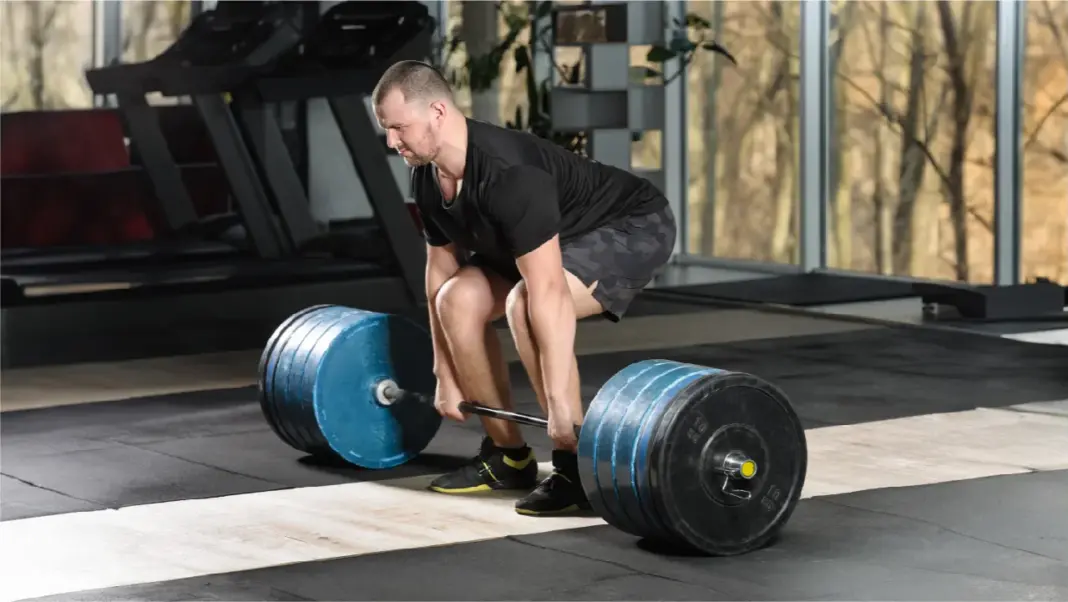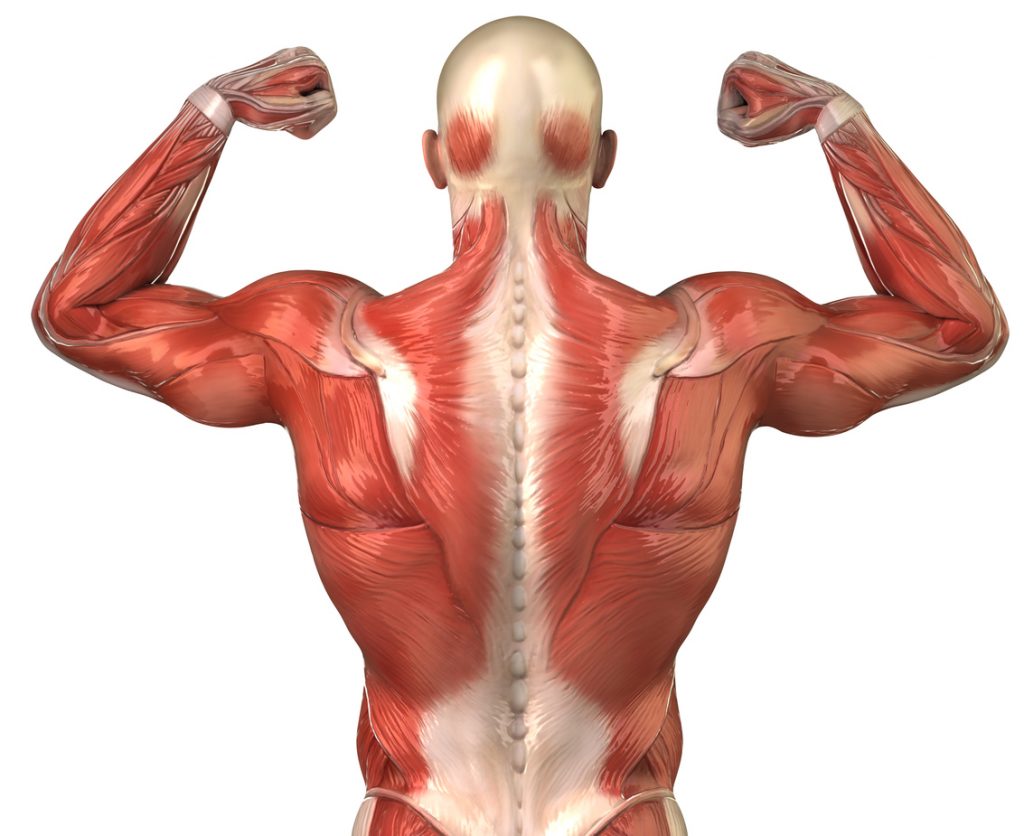Rear Delts Are Holding You Back: How to Train the Most Ignored Back Muscle
When lifters train back, they usually think rows, pulldowns, and deadlifts. And when they train shoulders, it’s overhead presses, front raises, and maybe a set of lateral raises.
Rear delts? Often forgotten. And that’s a massive mistake.
If you want a complete physique, capped shoulders, and a back that looks powerful from every angle, your posterior deltoids (rear delts) need direct attention (1).
In this article, we’re digging into:
- What rear delts actually do
- Why they matter for strength, aesthetics, and injury prevention
- The best rear delt exercises
- How to train them effectively (not just add a few flys at the end of shoulder day)
What Are Rear Delts and What Do They Do?
The deltoid is made up of three heads:
- Anterior (front) – active in pushing and pressing
- Lateral (side) – active in shoulder abduction and width
- Posterior (rear) – active in pulling and horizontal abduction
The rear delts originate on the scapula and insert on the humerus. Their primary roles:
- Shoulder extension and horizontal abduction
- External rotation of the humerus
- Stabilizing the shoulder joint during pulls and presses
They’re recruited in back training but rarely trained directly or completely—especially with the right form and volume.

Why Rear Delts Deserve Special Focus
🔹 1. They Complete the Upper Back
The rear delts help connect the shoulders to the traps and rhomboids, completing your upper-back silhouette. Neglect them, and your back looks flat or narrow in rear poses or photos.
🔹 2. They Balance Shoulder Development
Most lifters overtrain the front delts (pressing) and undertrain the rear delts. That leads to:
- Poor posture
- Shoulder impingements
- Imbalanced aesthetics
🔹 3. They Improve Pulling Power and Stability
Strong rear delts assist in rows, pull-ups, and deadlifts. They stabilize the shoulder, helping you control heavy weight and reduce injury risk.
🔹 4. They Enhance the 3D Shoulder Look
Want “capped” shoulders? You need width and roundness front to back. Rear delts fill in the back of the deltoid for that complete 3D look.
How to Actually Train Rear Delts (Most People Get It Wrong)
The biggest mistake? Thinking that rear delts are hit hard during back training. While they’re involved in rows, they often get overshadowed by:
- Rhomboids
- Lats
- Traps
You need to train rear delts with:
- Targeted angles
- Controlled tempo
- Moderate to high reps
- Isolation where needed
Just like arms or calves, they grow when you train them like a priority, not an afterthought.
Best Rear Delt Exercises (Ranked)
These exercises isolate and grow the rear delts without the interference of stronger back muscles.
-
Rear Delt Cable Fly (Reverse Cable Crossover)
Why it works: Constant tension and full range of motion isolate the rear delts like nothing else.
- Setup: Cables set at shoulder height or slightly higher
- Form Tip: Keep arms slightly bent, pull outward—not backward
- Cue: “Sweep your arms out wide, not back”
- Sets/Reps: 3–4 sets of 15–20 reps
-
Reverse Pec Deck Fly
Why it works: Stable, repeatable rear delt isolation with minimal momentum.
- Form Tip: Use a neutral grip, control the movement
- Don’t: Squeeze the shoulder blades too hard—let the delts do the work
- Sets/Reps: 3–4 sets of 12–15 reps
-
Bent-Over Rear Delt Dumbbell Raise
Why it works: Classic rear delt builder. Great for supersets and burnout sets.
- Form Tip: Keep torso parallel to floor, raise dumbbells outward, not backward
- Common Mistake: Using traps or momentum—go light and slow
- Sets/Reps: 3 sets of 15–20
-
Rear Delt Row (Elbows Flaring Out)
Why it works: A variation of bent-over rows, targeting rear delts with a wide elbow angle.
- Grip: Wide overhand grip
- Pull to: Upper chest or neck height
- Cue: Lead with elbows, not hands
- Sets/Reps: 3 sets of 10–12
-
Face Pull (Cable or Band)
Why it works: Combines rear delt activation with external shoulder rotation = posture and shoulder health
- Form Tip: Pull toward forehead with elbows flared
- Rope Tip: Separate the handles wide at the peak
- Sets/Reps: 3 sets of 15–20
-
Incline Bench Rear Delt Raise
Why it works: Locked body position removes momentum and shifts all tension to rear delts.
- Setup: Lie chest-down on a low incline bench with dumbbells
- Cue: Lead with elbows and pause at top
- Sets/Reps: 3–4 sets of 12–15
-
Machine Rear Delt Row (Reverse Row Machine)
Why it works: Stable machine = strict form + heavy load without recruiting larger back muscles.
- Form Tip: Elbows high, grip wide
- Focus on: Rear delt contraction, not pulling heavy
- Sets/Reps: 3 sets of 12–15
How to Add Rear Delts into Your Program
🔸 Option 1: Add to Shoulder Day
Rear delts go after your pressing or lateral work.
Example:
- Overhead Press – 4×6
- Lateral Raise – 3×15
- Rear Delt Cable Fly – 4×20
- Face Pull – 3×15
🔸 Option 2: Add to Back Day
After your heavy rows or pulls, hit rear delts with isolation work.
Example:
- Barbell Row – 4×10
- Pull-Up – 3×12
- Face Pull – 3×20
- Reverse Pec Deck – 3×15
🔸 Option 3: Rear Delt Focus Day (Bodybuilding Split)
Great for advanced lifters or bringing up a lagging body part.
Sample:
- Incline Rear Delt Raise – 4×15
- Rear Delt Cable Fly – 4×20
- Rear Delt Row – 3×12
- Face Pull Superset with Band Pull-Aparts – 3 sets
Training Guidelines for Rear Delt Growth
- Frequency: 2–3x per week (low recovery demand = higher frequency is fine)
- Volume: 10–20 working sets per week
- Intensity: Moderate weights, high focus
- Reps: 12–20 reps for most sets
- Rest: 30–60 seconds between sets
Common Rear Delt Training Mistakes
❌ Too much weight – Rear deltoids are small muscles. Going heavy = using traps or momentum.
❌ Turning rows into lat work – Pulling with elbows tucked targets lats, not delts. Keep elbows wide.
❌ Neglecting isolation – Rows alone won’t cut it. Use direct rear delt work.
❌ Poor mind-muscle connection – You have to feel the rear delts working. Lighten the weight and focus.
Final Takeaways: Don’t Let Rear Delts Hold You Back
If your shoulders aren’t popping from the side or your back looks soft in rear shots, your rear deltoids are probably the weak link.
Treat them like any other muscle group:
- Train them directly
- Progressively overload
- Use isolation + volume
- Prioritize technique over ego
Rear delts may be small, but they have a massive impact on how you look and perform. Train them hard—and consistently—and you’ll see your entire upper body transform.
🔗 Keep Growing: More Back Training Articles
- How to Build a Thick Back with Rowing Movements
- Deadlifts for Back Growth: Do They Really Work?
- The Ultimate Guide to Back Workouts





